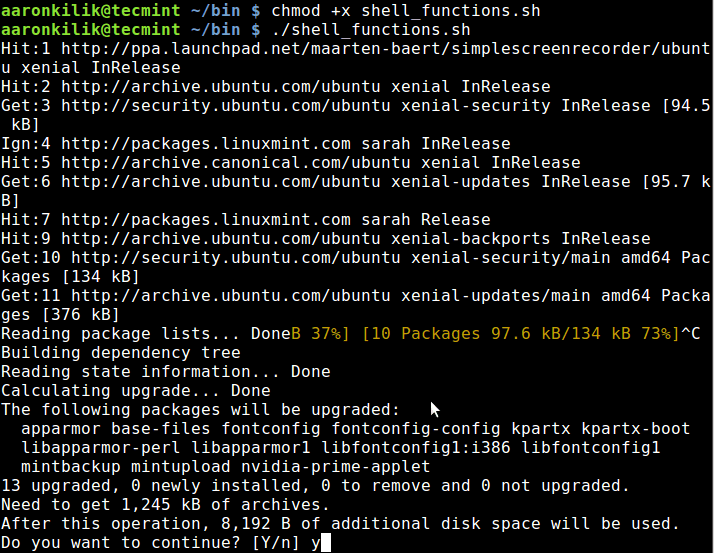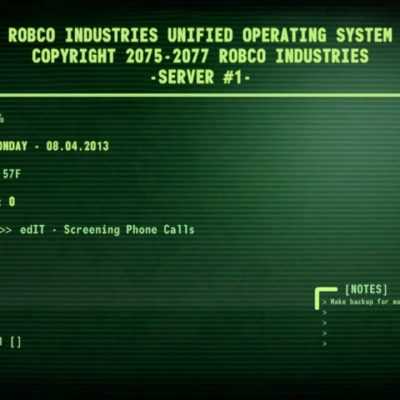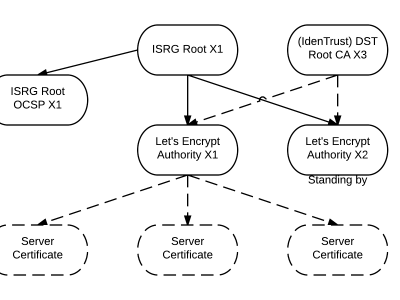理解 Linux 下 Shell 命令的不同分類及它們的用法

下面列出了 Linux 下命令的不同種類:
1. 程序可執行文件(文件系統 中的命令)
當你執行一條命令的時候,Linux 通過從左到右搜索存儲在 $PATH 環境變數中的目錄來找到這條命令的可執行文件。
你可以像下面這樣查看存儲在 $PATH 中的目錄:
$ echo $PATH
/home/aaronkilik/bin:/usr/local/sbin:/usr/local/bin:/usr/sbin:/usr/bin:/sbin:/bin:/usr/games:/usr/local/games
在上面的命令中,目錄 /home/aaronkilik/bin 將會被首先搜索,緊跟著是 /usr/local/sbin,然後一直接著下去。在搜索過程中,搜索順序是至關重要的。
比如在 /usr/bin 目錄里的文件系統中的命令:
$ ll /bin/
示例輸出:
total 16284
drwxr-xr-x 2 root root 4096 Jul 31 16:30 ./
drwxr-xr-x 23 root root 4096 Jul 31 16:29 ../
-rwxr-xr-x 1 root root 6456 Apr 14 18:53 archdetect*
-rwxr-xr-x 1 root root 1037440 May 17 16:15 bash*
-rwxr-xr-x 1 root root 520992 Jan 20 2016 btrfs*
-rwxr-xr-x 1 root root 249464 Jan 20 2016 btrfs-calc-size*
lrwxrwxrwx 1 root root 5 Jul 31 16:19 btrfsck -> btrfs*
-rwxr-xr-x 1 root root 278376 Jan 20 2016 btrfs-convert*
-rwxr-xr-x 1 root root 249464 Jan 20 2016 btrfs-debug-tree*
-rwxr-xr-x 1 root root 245368 Jan 20 2016 btrfs-find-root*
-rwxr-xr-x 1 root root 270136 Jan 20 2016 btrfs-image*
-rwxr-xr-x 1 root root 249464 Jan 20 2016 btrfs-map-logical*
-rwxr-xr-x 1 root root 245368 Jan 20 2016 btrfs-select-super*
-rwxr-xr-x 1 root root 253816 Jan 20 2016 btrfs-show-super*
-rwxr-xr-x 1 root root 249464 Jan 20 2016 btrfstune*
-rwxr-xr-x 1 root root 245368 Jan 20 2016 btrfs-zero-log*
-rwxr-xr-x 1 root root 31288 May 20 2015 bunzip2*
-rwxr-xr-x 1 root root 1964536 Aug 19 2015 busybox*
-rwxr-xr-x 1 root root 31288 May 20 2015 bzcat*
lrwxrwxrwx 1 root root 6 Jul 31 16:19 bzcmp -> bzdiff*
-rwxr-xr-x 1 root root 2140 May 20 2015 bzdiff*
lrwxrwxrwx 1 root root 6 Jul 31 16:19 bzegrep -> bzgrep*
-rwxr-xr-x 1 root root 4877 May 20 2015 bzexe*
lrwxrwxrwx 1 root root 6 Jul 31 16:19 bzfgrep -> bzgrep*
-rwxr-xr-x 1 root root 3642 May 20 2015 bzgrep*
2. Linux 別名
這些是用戶定義的命令,它們是通過 shell 內置命令 alias 創建的,其中包含其它一些帶有選項和參數的 shell 命令。這個意圖主要是使用新穎、簡短的名字來替代冗長的命令。
創建一個別名的語法像下面這樣:
$ alias newcommand='command -options'
通過下面的命令,可以列舉系統中的所有別名:
$ alias -p
alias alert='notify-send --urgency=low -i "$([ $? = 0 ] && echo terminal || echo error)" "$(history|tail -n1|sed -e '''s/^s*[0-9]+s*//;s/[;&|]s*alert$//''')"'
alias egrep='egrep --color=auto'
alias fgrep='fgrep --color=auto'
alias grep='grep --color=auto'
alias l='ls -CF'
alias la='ls -A'
alias ll='ls -alF'
alias ls='ls --color=auto'
要在 Linux 中創建一個新的別名,仔細閱讀下面的例子。
$ alias update='sudo apt update'
$ alias upgrade='sudo apt dist-upgrade'
$ alias -p | grep 'up'

然而,上面這些我們創建的別名只能暫時的工作,當經過下一次系統啟動後它們不再工作。你可以像下面展示的這樣在 '.bashrc' 文件中設置永久別名。

添加以後,運行下面的命令來激活:
$ source ~/.bashrc
3. Linux Shell 保留字
在 shell 程序設計中,if、then、fi、for、while、case、esac、else、until 以及其他更多的字都是 shell 保留字。正如描述所暗示的,它們在 shell 中有特殊的含義。
你可以通過使用下面展示的 type 命令來列出所有的 shell 關鍵字:
$ type if then fi for while case esac else until
if is a shell keyword
then is a shell keyword
fi is a shell keyword
for is a shell keyword
while is a shell keyword
case is a shell keyword
esac is a shell keyword
else is a shell keyword
until is a shell keyword
4. Linux shell 函數
一個 shell 函數是一組在當前 shell 內一起執行的命令。函數有利於在 shell 腳本中實現特殊任務。在 shell 腳本中寫 shell 函數的傳統形式是下面這樣:
function_name() {
command1
command2
......
}
或者像這樣:
function function_name {
command1
command2
......
}
讓我們看一看如何在一個名為 shell_functions.sh 的腳本中寫 shell 函數。
#!/bin/bash
#write a shell function to update and upgrade installed packages
upgrade_system(){
sudo apt update;
sudo apt dist-upgrade;
}
#execute function
upgrade_system
取代通過命令行執行兩條命令:sudo apt update 和 sudo apt dist-upgrade,我們在腳本內寫了一個像執行一條單一命令一樣來執行兩條命令的 shell 函數 upgrade_system。
保存文件,然後使腳本可執行。最後像下面這樣運行 shell 函數:
$ chmod +x shell_functions.sh
$ ./shell_functions.sh

5. Linux Shell 內置命令
這些是在 shell 中內置的 Linux 命令,所以你無法在文件系統中找到它們。這些命令包括 pwd、cd、bg、alias、history、type、source、read、exit 等。
你可以通過下面展示的 type 命令來列出或檢查 Linux 內置命令:
$ type pwd
pwd is a shell builtin
$ type cd
cd is a shell builtin
$ type bg
bg is a shell builtin
$ type alias
alias is a shell builtin
$ type history
history is a shell builtin
學習一些 Linux 內置命令用法:
結論
作為一個 Linux 用戶,知道你所運行的命令類型是很重要的。我相信,通過上面明確、簡單並且易於理解的解釋,包括一些相關的說明,你可能對 「Linux 命令的不同種類」有了很好的理解。
你也可以在下面的評論區提任何問題或補充意見,從而和我們取得聯繫。
via: http://www.tecmint.com/understanding-different-linux-shell-commands-usage/
作者:Aaron Kili 譯者:ucasFL 校對:wxy
本文轉載來自 Linux 中國: https://github.com/Linux-CN/archive






















